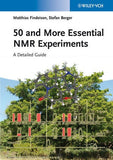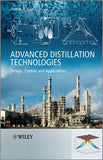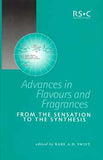Solvent Effects in Chemistry, 2nd Edition by Erwin Buncel, Robert A. Stairs
Solvent Effects in Chemistry, 2nd Edition
by Erwin Buncel, Robert A. Stairs
240 Pages
July 2015
Description
Table of Contents
Preface to the Second Edition viii
Preface to the First Edition x
1 Physicochemical Foundations 1
1.1 Generalities 1
1.2 Classification of Solvents 4
1.3 Solvents in the Workplace and the Environment 6
1.4 Some Essential Thermodynamics and Kinetics: Tendency and Rate 7
1.5 Equilibrium Considerations 7
1.6 Thermodynamic Transfer Functions 9
1.7 Kinetic Considerations: Collision Theory 10
1.8 Transition -State Theory 11
1.9 Reactions in Solution 16
1.10 Diffusion -Controlled Reactions 16
1.11 Reaction in Solution and the Transition State Theory 18
Problems 21
2 Unreactive Solvents 23
2.1 Intermolecular Potentials 23
2.2 Activity and Equilibrium in Nonelectrolyte Solutions 24
2.3 Kinetic Solvent Effects 28
2.4 Solvent Polarity 30
2.5 Electrostatic Forces 30
2.6 Electrolytes in Solution 33
2.7 Solvation 36
2.8 Single Ion Solvation 39
2.9 Ionic Association 42
2.10 Solvent Mixtures 47
2.11 Salt Effects 53
Problems 55
3 Reactive Solvents 57
3.1 Specific Solute/Solvent Interactions 57
3.2 Hydrogen Bonding 58
3.3 Acids and Bases in Solvents 59
3.4 Brønsted–Lowry Acids and Bases 60
3.5 Acidity Functions 62
3.6 Acids and Bases in Kinetics 65
3.7 Lewis Acids and Bases 76
3.8 Hard and Soft Acids and Bases (HSAB) 77
3.9 Scales of Hardness or Softness 78
3.10 Acids and Bases in Reactive Aprotic Solvents 82
3.11 Extremes of Acidity and Basicity 83
3.12 O xidation and Reduction 83
3.13 Acidity/Redox Diagrams 84
3.14 Unification of acid–Base and Redox Concepts 86
Problems 87
4 Chemometrics: Solvent Effects and Statistics 89
4.1 Linear Free Energy Relationships 89
4.2 Correlations between Empirical Parameters and Other Measurable Solvent Properties 91
4.3 Representation of Correlation Data on the Hemisphere 95
4.4 Some Particular Cases 101
4.5 Acidity and Basicity Parameters 106
4.6 Base Softness Parameters 110
4.7 Conclusion 111
5 T heories of Solvent Effects 112
5.1 Introduction: Modeling 112
5.2 Quantum -Mechanical Methods 113
5.3 Statistical -Mechanical Methods 119
5.4 Integral Equation Theories 123
5.5 Solvation Calculations 123
5.6 Some Results 126
Problems 139
6 Dipolar Aprotic Solvents 140
6.1 Introduction 140
6.2 Acidities in DMSO and the H -Scale in DMSO–2 O Mixtures 142
6.3 Use of Thermodynamic Transfer Functions 144
6.4 Classification of Rate Profile -Medium Effect Reaction Types 147
6.5 Bimolecular Nucleophilic Substitution 149
6.6 Proton Transfer 152
6.7 D2–HO− Exchange 153
Problems 154
7 E xamples of Other Solvent Classes 155
7.1 Introduction 155
7.2 Acidic Solvents 155
7.3 Basic Solvents 158
7.4 Chiral Solvents 161
8 N ew Solvents and Green Chemistry 164
8.1 Neoteric Solvents 164
8.2 Supercritical Fluids 164
8.3 Ionic Liquids 167
8.4 Low -Transition -Temperature Mixtures 173
8.5 Bio -Based Solvents 174
8.6 Fluorous Solvents 174
8.7 Switchable Solvents 174
8.8 Green Solvent Chemistry 176
9 Concluding Observations 182
9.1 Choosing a Solvent 182
9.2 Envoi 184
Appendix (Tables listing parameters, selected values) 185
Answers 197
References 199
Index
Author Information
Robert A. Stairs, Ph.D, FCIC, is Professor Emeritus in the Department of Chemistry at Trent University at Peterborough, Ontario, having joined at its opening in 1964, after teaching at Cornell and at Queen's University in Kingston. During his 25 years at Trent, he served as chair of the Department twice. Since retiring, Prof. Stairs keeps up a close relationship with Trent, returning regularly for seminars and special events, and maintaining a modest research program.
Erwin Buncel, PhD, FRCS, is Professor Emeritus in the Physical Organic Chemistry department at Queen's University. He received his Ph.D. in Organic Chemistry in 1957 and his D.Sc. in Physical Organic Chemistry in 1970, both at the Unversity of London. He has won several awards and honors, including the R.U. Lemieux Award in


















